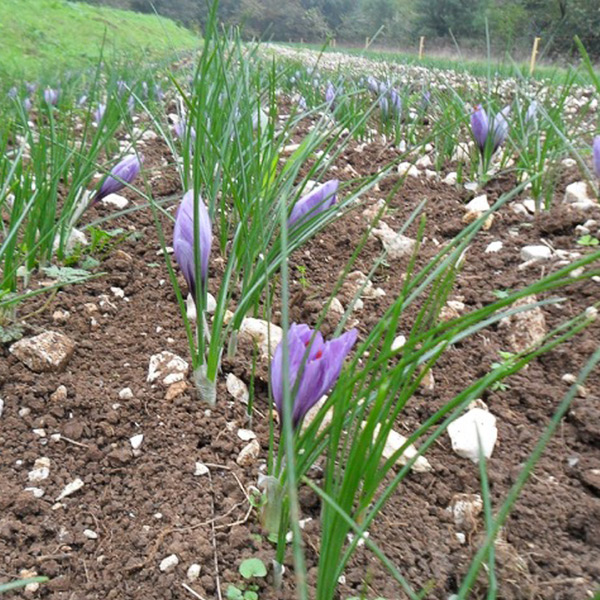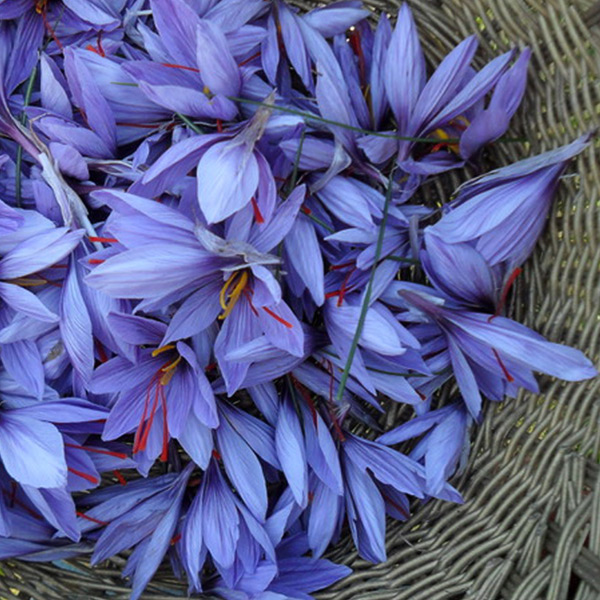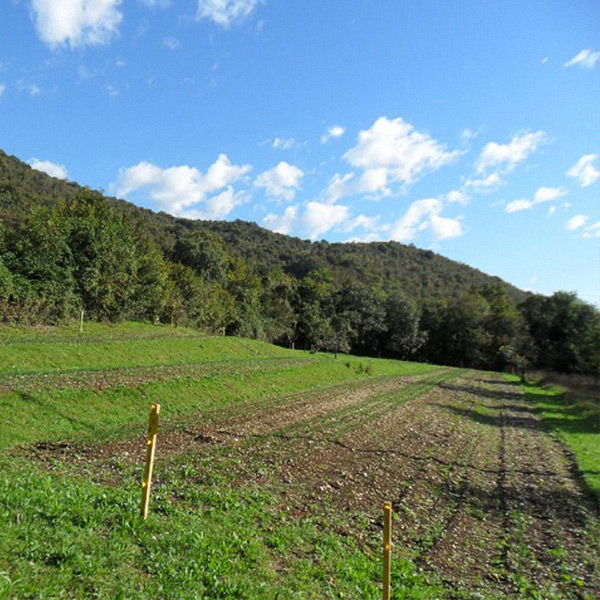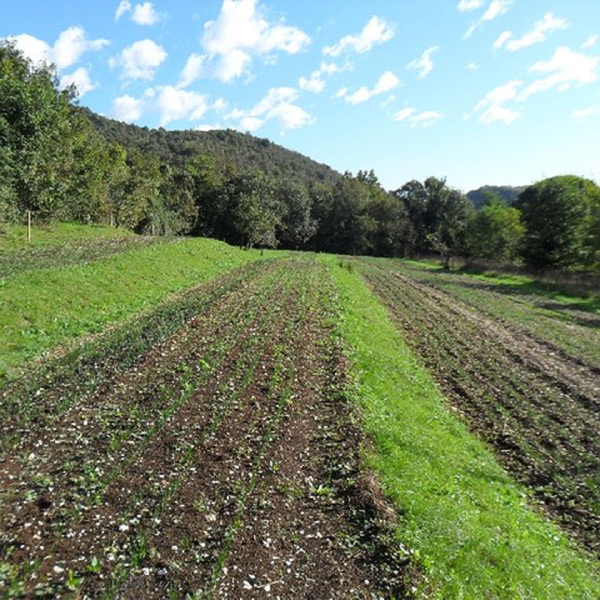Cultivation of saffron and olive trees
Saffron
Saffron cultivation in Polcenigo dates back to 1989, when the first corms were implanted in San Giovanni di Polcenigo.
This cultivation requires loads of hardworking manual labour. First the field is fertilized with manure and composting well mixed together with the soil, which has to be not too thick and in the sun.
Corms shall not be placed in clayey fields as these may be damaged or may rot.
Seeds are sowed in August, and the crocus sativus, the autumnal saffron, will grow in the beginning of October so that by the middle of the month the first flowers will be manually gathered, one by one. Flowering usually continues until the end of November.
Flowers are gathered daily and immediately hulled, which means that the red stigmas and styles, called threads, are plucked from the violet flower and soon dried.
And the spice is ready. Here in Polcenigo we boast a precious production of saffron, not related to quantity but certainly to quality in terms of colour, aroma and smell.
Lately the initiative of the “local agricultural entrepreneurs” and the specific characteristics of the fields of the area have encouraged a limited yet high-quality production of saffron in the Pedemontana area, particularly in Polcenigo and in the villages nearby, in Dardago and Budoia. High-end restaurants of the area are now interested and much appreciate this production.
According to a Greek myth, saffron was born from a story of Crocus, a beautiful young man who fell in love with a nymph called Smilace, the favourite of Hermes. For revenge, the God turned Crocus into a bulb and his pink and violet flowers lived as the flowers of Saffron.
This spice has been recounted since ancient times, in the Bible, the Iliad and the poems by the famous ancient authors, Virgil, Homer and Pliny.
Flowers bloom in autumn, when the first rains arrive and they show their most spectacular beauty in October and November. During this period these flowers are gathered before the open out to pluck the vermilion red stigmas, which identify this spice. Later these threads are sieved and dried. The drying process reduces the weight of the stigmas by approximately one sixth. In fact, 1kg of saffron powder corresponds to 200.000 stigmas.
It is quite self-explanatory why saffron is the most expensive spice in the world!
Expert local chefs prepare exceptionally tasteful yellow-toned dishes. The saffron liquor is a very typical product that goes very well with pies and biscuits.
A few historical facts about saffron.
Since ancient times Romans used to sprinkle it in theatres to spread the perfume during their shows.
Ancient authors, such as Theophrastus and Pliny, enhanced all the healing properties of saffron, particularly against eye irritation.
The Greek philosopher Celsus used it as diuretic, detergent, soothing against several inflammatory diseases, pain, ulcer, suppuration, poisoning.
This spice became a precious ingredient also in medieval cuisine. At first, it was used only as a colorant. The recipes were inspired by the Arab-Persian tradition of dietetics. Few of these recipes were found, such as sweet and sour stew with peas dyed with saffron, and Judeb poppy focaccia.
The Anglo-Norman tradition counts a salmon and saffron soup and several different soups with beans, leek, cabbage, turnip and saffron; a yellow sauce to garnish goose cooked with garlic, flour, salt, milk and saffron. It is often used on pies and meat. Also Swabian tradition includes saffron in soups, with boiled fennel and chicken. Or broth made with fish, or sardines and anchovies with Greek wine, pepper and saffron.
Saffron gained great success in several cuisines, during the reign of Frederick II, and during the Middle Ages it was used in cooking and pharmacy, and named as “king of plants”, “vegetable panacea”, “soul of lungs”.
Even Pellegrino Artusi, an Italian writer best known as the author of the cookbook “The Science of Cooking and the Art of Fine dining”, mentioned saffron in several recipes. And more and more cooks and writers did.
Thanks to all this literature, our agriculture has a great opportunity to expand its production with a very superb characteristic product.
The olive trees
Olives are a typical Mediterranean product and olive oil is produced in several areas of our region.
Traditionally olives are gathered from mid-October to the end of December. In some regions, farmers tap the trees with flexible sticks to get the olives off, and in other regions farmers wait for the olives to be ripe so that they fall from the trees. Olives are collected manually with combs and shoulder bags stepping on big wooden ladders. Although this technique takes a lot of time and effort, it allows picking the best fruits, selecting the intact and ripe ones. Later olives are transferred in special machines and pressed to extract a very aromatic oil that will garnish typical dishes of Polcenigo. Olive oil can also be used raw, on toasted bread, great for tasteful starters and aperitifs.



